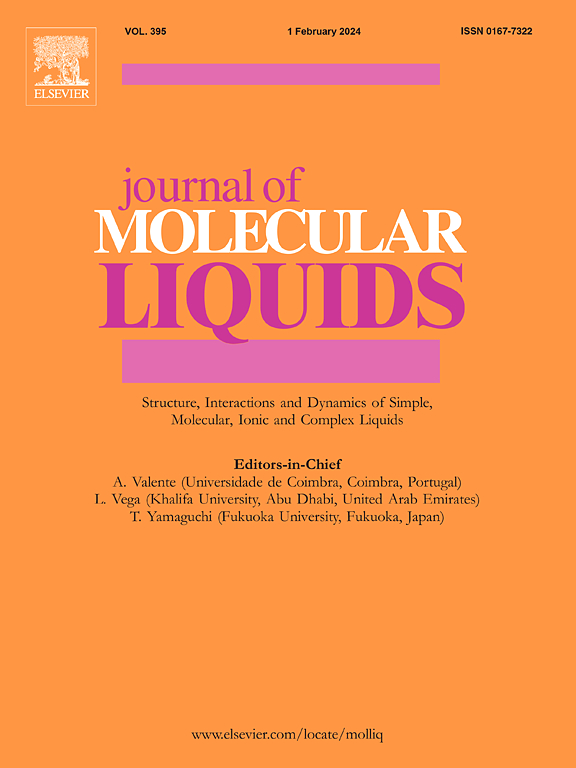Understanding interfacial structure and preferential adsorption in mixed alkali-halide electrolytes at graphene oxide electrodes by constant potential molecular dynamics simulations
IF 5.3
2区 化学
Q2 CHEMISTRY, PHYSICAL
引用次数: 0
Abstract
Graphene oxide (GO) is a promising material that finds use in electrochemical applications. Therefore, understanding the microscopic behavior of electrolytes in contact with GO electrodes is important. In this work, we focus on a detailed description and explanation of the structure, adsorption behavior, and self-diffusion of aqueous solutions of single-salt and mixed-cation alkali metal chlorides in the vicinity of hydroxylated GO electrodes under normal thermodynamic conditions and varying interelectrode voltages. We performed molecular dynamics simulations of the solutions constrained between planar GO electrodes using the constant potential method. We analyzed several structural properties, including profiles of atomic density, charge density, characteristics of the network of non-covalent bonds, and in-plane and transverse self-diffusion, all as functions of the distance from the GO surface. We discuss and explain the behavior of all these properties in detail as a result of three driving forces: (i) the direct electrode-solution interactions, (ii) the tendency of the solutions to saturate the network of non-covalent bonds, and (iii) the tendency of the system to suppress local charge accumulation in any region larger than typical interparticle distances. The existence of hydroxyl groups here greatly enhances the direct electrode-solution interactions, causing qualitative differences in the structure, including a different arrangement of the adsorption layers of ions in comparison to the solutions at graphene electrodes.

求助全文
约1分钟内获得全文
求助全文
来源期刊

Journal of Molecular Liquids
化学-物理:原子、分子和化学物理
CiteScore
10.30
自引率
16.70%
发文量
2597
审稿时长
78 days
期刊介绍:
The journal includes papers in the following areas:
– Simple organic liquids and mixtures
– Ionic liquids
– Surfactant solutions (including micelles and vesicles) and liquid interfaces
– Colloidal solutions and nanoparticles
– Thermotropic and lyotropic liquid crystals
– Ferrofluids
– Water, aqueous solutions and other hydrogen-bonded liquids
– Lubricants, polymer solutions and melts
– Molten metals and salts
– Phase transitions and critical phenomena in liquids and confined fluids
– Self assembly in complex liquids.– Biomolecules in solution
The emphasis is on the molecular (or microscopic) understanding of particular liquids or liquid systems, especially concerning structure, dynamics and intermolecular forces. The experimental techniques used may include:
– Conventional spectroscopy (mid-IR and far-IR, Raman, NMR, etc.)
– Non-linear optics and time resolved spectroscopy (psec, fsec, asec, ISRS, etc.)
– Light scattering (Rayleigh, Brillouin, PCS, etc.)
– Dielectric relaxation
– X-ray and neutron scattering and diffraction.
Experimental studies, computer simulations (MD or MC) and analytical theory will be considered for publication; papers just reporting experimental results that do not contribute to the understanding of the fundamentals of molecular and ionic liquids will not be accepted. Only papers of a non-routine nature and advancing the field will be considered for publication.
 求助内容:
求助内容: 应助结果提醒方式:
应助结果提醒方式:


